Table Pose: A Complete Guide to Stability and Strength on the Mat
The post Table Pose: A Complete Guide to Stability and Strength on the Mat appeared first on The Yoga Nomads.
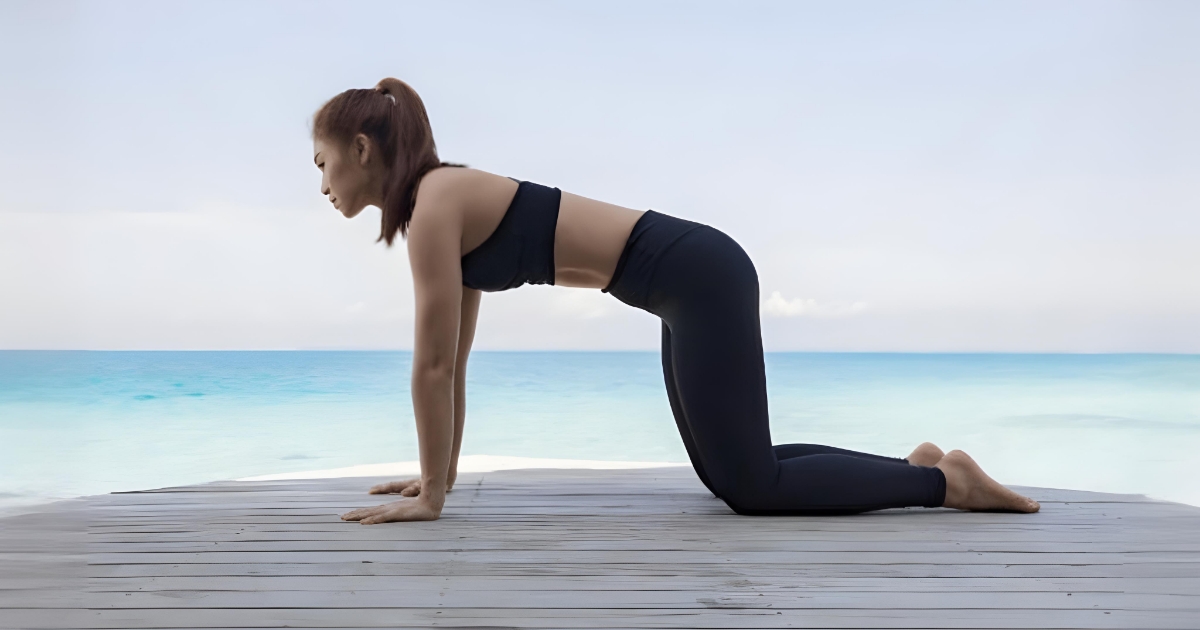
Key Takeaway
Table Top Pose serves as a foundational yoga posture that brings numerous benefits, including improved posture, balance, and core strength. To properly perform Table Pose, follow a step-by-step guide that ensures correct alignment and breathing, which can enhance its effectiveness and prevent injury.
For new students building their yoga toolkit, there is no better pose to focus on than the foundational Table Pose. Many yoga teachers would agree that we often find wisdom in the most simple yoga poses, which holds here.
Mastering this fundamental position paves the way for more complex postures by highlighting stability and alignment.
In the following guide, we’ll unravel the steps to achieve this pose with grace and alignment, uncover its myriad benefits for both body and mind, and discover how it serves as the cornerstone for achieving balance in our practice.
Watch our recommended steps for entering, holding, and exiting the pose.
Significance of Table Pose
The name Table Pose is a direct translation of its Sanskrit name, Bharmanasana, which combines the words for “table” (bharman) and “pose” (asana). Many yoga teachers also refer to this asana simply as Table Top.
To me, this asana symbolizes a stable foundation within yoga practice. New students eager to start flowing through yoga sequences may overlook this asana’s importance despite its simplicity. However, yoga teachers will agree that mastering the alignment in Table Pose is crucial if you want to move on to more complex or challenging poses.
Step-by-Step Guide to Table Pose
This asana appears relatively simple at first glance. But when done correctly, you’ll realize that this pose can be a workout all by itself. Follow these detailed steps to refine your alignment and engage the proper muscle groups.
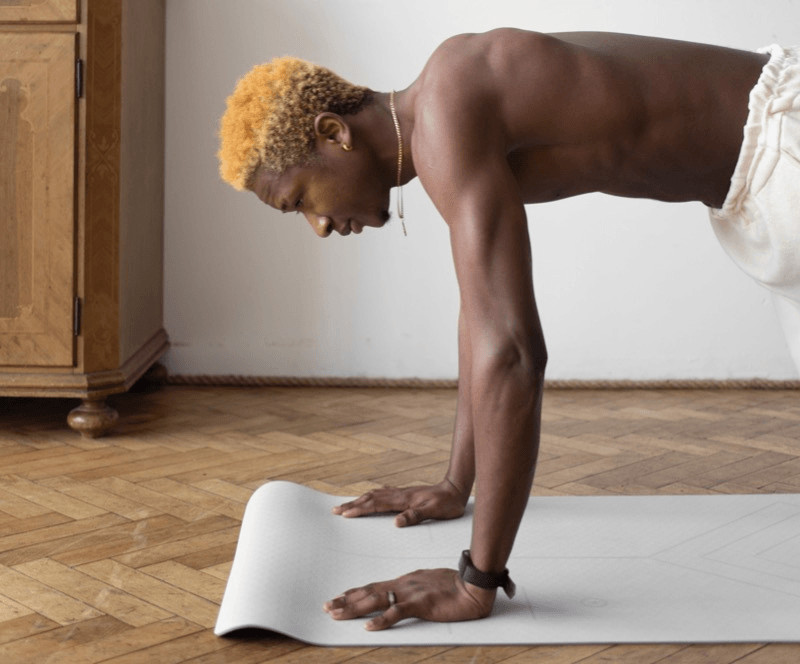
Body Position
Begin on your yoga mat in a kneeling position. Separate your knees to hip-width distance. Reach your arms forward and plant your hands on your mat. Press yourself forward so your arms and back are straight. Align your palms and wrists directly under your shoulders. Spread your fingers wide and distribute your weight evenly across both hands. Keep your hips stacked directly over your knees and the tops of your feet pressing into the floor. Spread your shoulder blades wide across your upper back. Look down at your mat between your hands to keep your head and neck in line with the rest of your spine. Hold your Table Pose for 1 to 2 minutes, allowing your breath to flow naturally.Core Engagement
Engaging your core muscles will help you feel strong and stable in your Table Pose. Press your belly in toward your spine, tightening your abdominal muscles.
This engagement is crucial for maintaining stability while holding the position and increases awareness of your core engagement in other postures.
Expert Tips to Refine Alignment
Now that you’re in the basic position, it’s time to perfect your alignment with these refined alignment cues.
Keep your chest lifted: A common mistake I see is allowing the chest to drop between the shoulders. Instead, press the floor away to like up and out of your shoulder joints, keeping your chest lifted. Keep your tailbone in a neutral position: Maintain the natural curves of your spine without tilting your tailbone up or tucking it under. Keep your breath flowing: Some students tend to hold their breath when they hold a yoga pose. As you focus on your alignment, don’t forget to keep your breaths flowing in and out at a leisurely pace. Keep your neck long: Don’t lift your head to look out in front of you as this compresses the back of the neck. Instead, look down at your mat and keep your gaze fixed on a point between your hands.Table Pose Modifications
Many students can benefit from simple modifications. Using props or slightly altering body position will help prevent injury and discomfort in this position.
Blanket: Place a folded blanket under your knees to prevent pain, especially if you plan to stay in Table Pose for a few minutes. Blocks: Place yoga blocks underneath your palms to create more space between your torso and the floor. This modification is fantastic for accommodating different body shapes and proportions, such as shorter arms or a larger belly. Wall support: To help with stability, try positioning yourself parallel to a wall, with one shoulder and hip pressing against it.
Hugger Mugger Deluxe Wool Blanket - Navy - Soft and Firm, Excellent Yoga Prop, Provides Extra...
Wrist Care
Wrist pain is one of the most common complaints I hear from my students in this asana. This happens due to weight and pressure on the wrist joints in a flexed position. If you experience mild write discomfort, try one of these variations:
Move your hands slightly in front of your shoulders rather than placing them directly underneath. This decreases the flexion angle in the wrist joint, relieving some pressure. Try making fists with your hands and placing your knuckles on the floor with your palms facing one another. This variation eliminates flexion of the wrist joints, keeping them straight instead.When I was recovering from wrist surgery, these simple variations were a saving grace, allowing me to continue practicing yoga while gradually building back strength.
Even if you choose not to use props in Table Pose, I recommend using a high-quality, thick yoga mat to cushion your knees and hands. The 6mm workout mat by lululemon is a top choice!
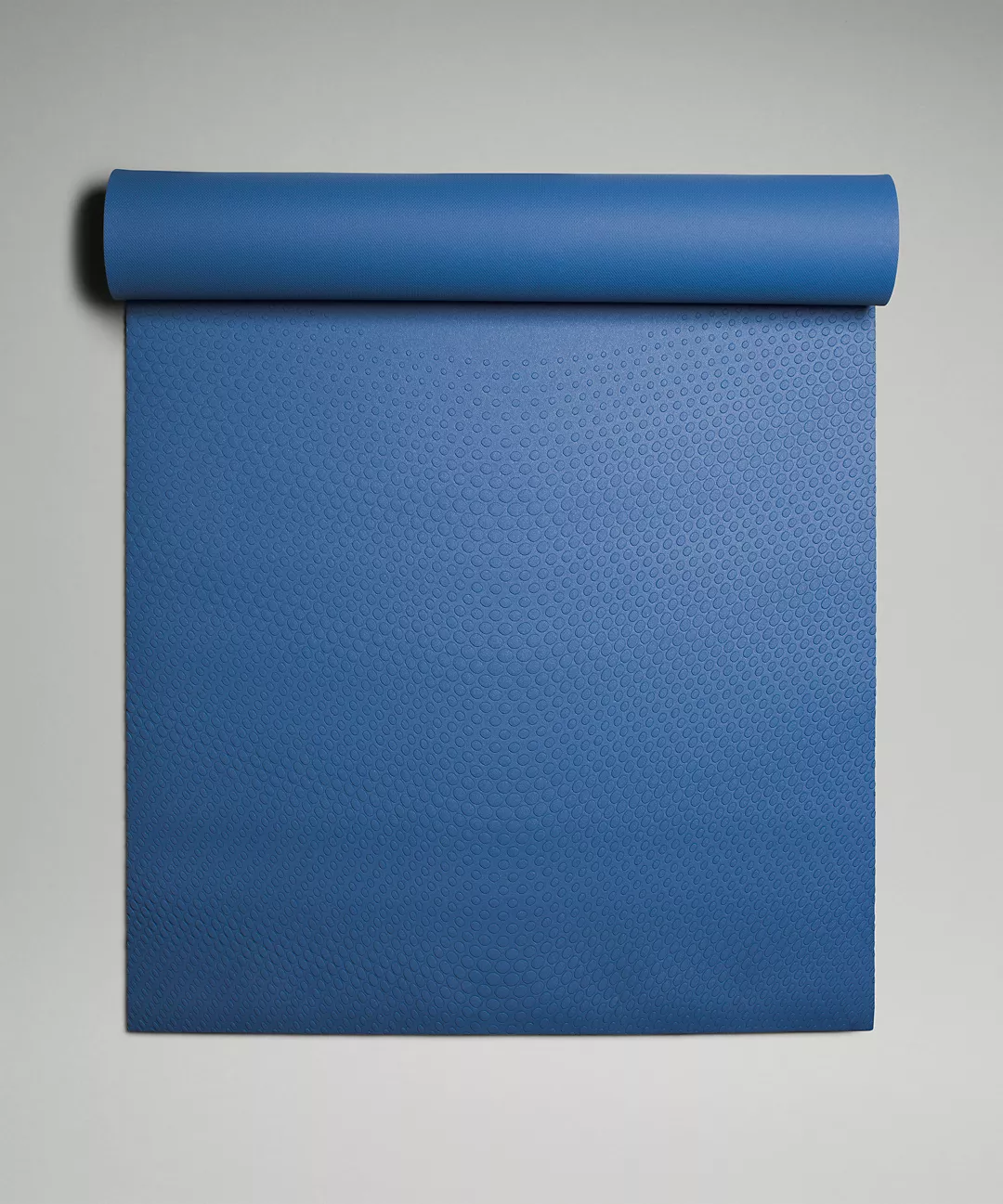
lululemon’s The Workout Mat 6mm
Balancing Table Pose Variation
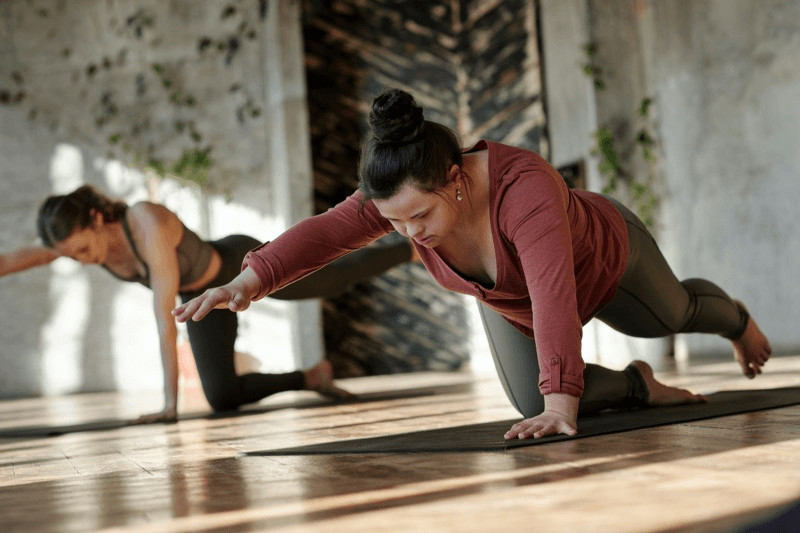
Feeling strong and stable? Challenge yourself with one of my favorite variations of this asana: Balancing Table Pose.
From Table Top, extend your left arm forward as you stretch your right leg back. Hold this asymmetrical position for a few breaths, engaging your abdominal muscles to keep your spine long and torso stable. Keep your gaze steady. Find a point on the floor and focus there. For an added challenge, turn this into a mini-flow. Exhale and touch your left elbow to your right knee beneath you, then inhale to extend both limbs. Keep this movement going for a few breaths to give your core muscles a workout. When ready, release your arm and leg down, and then try this exercise on your other side, extending your right arm and left leg.Contraindications and Cautions for Table Pose
Even the most basic yoga poses might be risky for some people. The biggest concern is injury or recent surgery in any weight-bearing joints involved in this asana, including wrist, knee, or shoulder issues.
If you’ve experienced any of these issues, get clearance from your doctor before resuming your typical workout or yoga routine.
Benefits of Practicing Table Pose
This foundational asana supports a strong yoga practice and benefits your body and mind. Here are some of the positive effects of Table Pose.
Physical Perks
Alleviates back tension: This asana stretches the spine, relieving tension after periods of sitting hunched at a desk. Strengthens key muscle groups: This position tones the arms, shoulders, and core muscles. Improves posture: As you refine your alignment, you become acutely aware of the position of your spine, leading to better postural awareness in daily life. Increases proprioception: Your body’s ability to sense where it is in space is called proprioception. This skill is essential for all types of movement and mobility.Mental Gains
Calms and grounds the mind: This asana has a grounding effect on the body as your hands and knees connect to the earth. It promotes a sense of stability and security, helping reduce anxiety. Increases focus and concentration: Following detailed alignment cues for this asana requires heightened awareness and concentration, building a solid mind-body connection. Reduces stress: Practicing controlled and conscious breathing in this posture calms the nervous system, activating your “rest and digest” mode.Core Strengthening with Table Pose
In my experience, toning the core is one of the most valuable aspects of practicing Table Pose. Your core muscles work to support your spine, keep your torso upright, and help stabilize you when balancing.
Core strength and breath control share a deep connection. Diaphragmatic breathing naturally activates the abdominal muscles. When coordinated, your breath and body work together to support dynamic movement safely and efficiently.
That’s why I love using Table Pose in many of my yoga sequences. It allows me to concentrate specifically on these factors that support all types of functional movement.
Using Table Pose in Your Yoga Sequences
The importance of this asana is apparent in its versatile uses in all types of yoga sequences, also serving as the set-up for many other kneeling yoga poses. Here are some specific ways you can incorporate Table Pose into a sequence.
As a warm-up: This is a go-to yoga pose in all of my warm-ups. From Table Top, I flow through a few Cat and Cow stretches. Then, I like to tuck my toes and lift my knees a few inches off the floor to feel my core and leg muscles fire up. In transitions: This asana is a perfect transition when moving from a standing sequence back down to your mat (or vice versa). For example, you can step back to Downward Facing Dog from Forward Fold and gently lower your knees to Table Pose. As a mindful check-in: I often use this position to reconnect with my core and bring my attention to my alignment. It allows me to pause, take a few deep breaths, and boost my focus.Pairing Table Pose With Other Kneeling Yoga Poses
Use this posture as a home base for other yoga poses that begin on your hands and knees. For each pose, start in Table Top and follow the steps given.
Thread the Needle: Reach your left arm up toward the sky, then thread it underneath your body, placing your left shoulder on your mat. Hold for several breaths, then return to your starting position and repeat on your right side. Extended Puppy: Walk your hands forward, keeping your arms straight, and bring your forehead down to the floor, giving your shoulder and upper back a deep stretch. To release, press into the floor to lift your chest and shoulders and return your palms to their original position. Tiger Pose: Extend your right leg behind you, using your abdominal muscles to stabilize yourself. Bend your right knee and flex your foot. With an inhale, let your belly drop, lift your chin, and arch your back slightly. Hold for a few breaths, then release your right leg to your mat. Repeat Tiger with your left leg lifting behind you.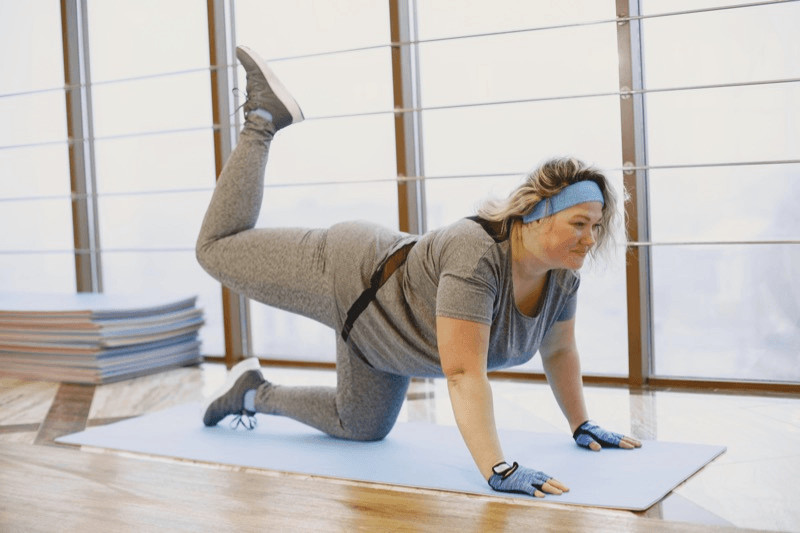
Emphasizing core strengthening and balance, Table Top Pose is a cornerstone for a well-rounded yoga practice. With its foundational alignment and versatile applications, this asana offers a gateway to enhanced flexibility, strength, balance, and mindful movement. Consider it not only as a standalone posture but as a building block that supports every other pose in your yoga journey.
Next time you find yourself on your mat, I invite you to pay close attention to your alignment rather than simply flowing through this pose. As you do so, reflect on the stability it brings to your body and how it mirrors the balance sought in daily life.
Share your experiences or questions below, and let’s continue growing together on our path to health and harmony through yoga. And, if you’d like to receive more great info like this in your inbox once in a while, join our email newsletter!
Pop quiz! 🧘🤔
Table Top Pose tones the core muscles.
The gaze in Table Top Pose is directed toward the ceiling.
This pose is safe for people with recent wrist or shoulder injuries.
Frequently Asked Questions
What is Table Top Pose in Yoga?
The Table Top Pose, also known as Bharmanasana, is a foundational yoga position that resembles a sturdy table with the back as the tabletop and hands and feet as legs.
Can beginners modify Table Top Pose?
Yes, beginners can use cushions for support or reduce wrist strain by making fists instead of flat palms to modify the pose.
Are there any risks associated with practicing this asana?
Individuals with issues in the knees or wrists should approach this asana cautiously or avoid it entirely to prevent further injury.
Will this posture help strengthen my core?
Yes, maintaining proper alignment in Table Top engages abdominal muscles, contributing to core strengthening over time.
How can I incorporate the Table Top Pose into my yoga practice?
You can use this pose in your warm-ups, as a transition, to build muscle tone, or to complement other kneeling stretches like Extended Puppy and Tiger poses.
Thanks for your feedback!

 Lynk
Lynk 











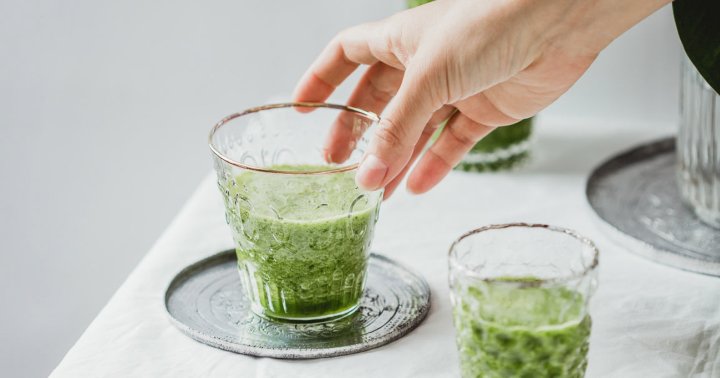










![Are You Still Optimizing for Rankings? AI Search May Not Care. [Webinar] via @sejournal, @hethr_campbell](https://www.searchenginejournal.com/wp-content/uploads/2025/06/1-1-307.png)






